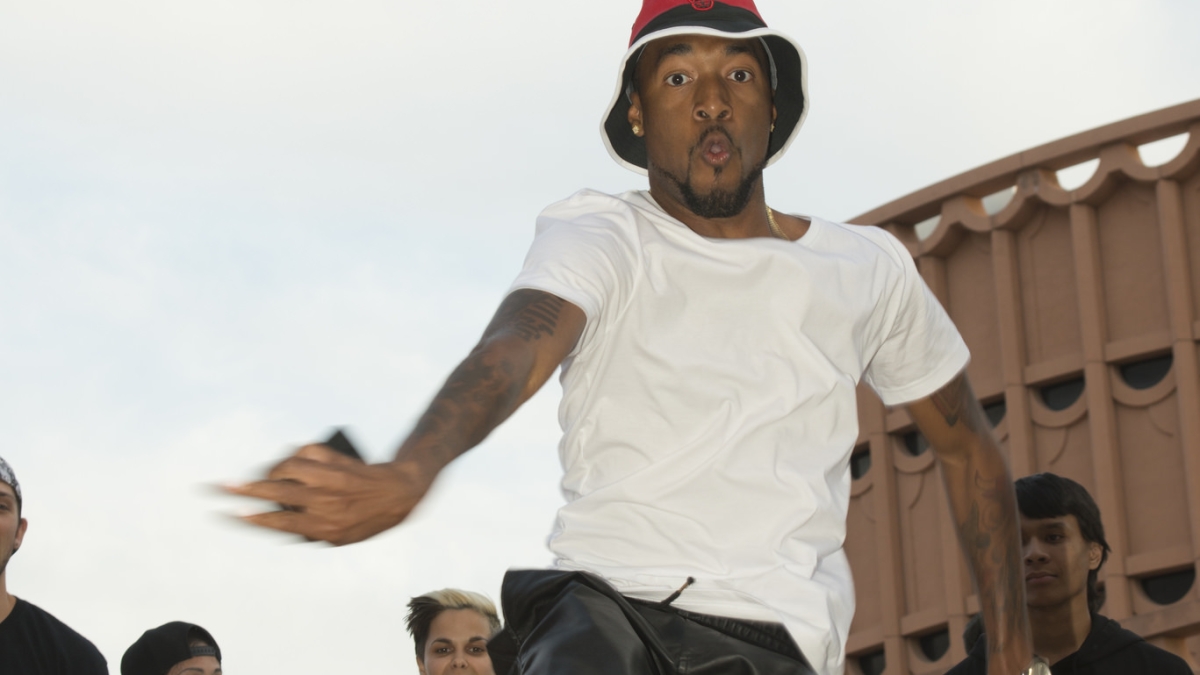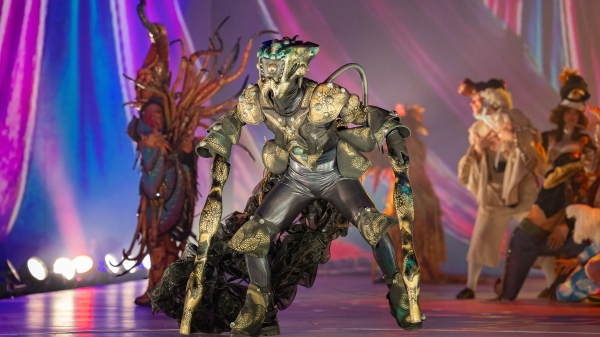Bringing urban culture into the ivory tower

A dancer is caught mid-move during last year's Urban Sol event.
Edson “House” Magaña was still in high school when he got his nickname. It came from his preference in music — a strain of electronic dance music that provided a heavy beat he could dance to.
The nickname stuck through the years and today, Magaña is known as one of the most accomplished breakers, or breakdancers, in the Southwest.
He’s also an Arizona State University alumnus, having earned his undergraduate degree in psychology from ASU in the ’90s while simultaneously receiving another kind of education, off campus, in urban dance and hip-hop. He founded the Furious Styles Crew and is a member of the Mighty Zulu Kings, a legendary urban art crew that dates back to the early ’70s.
But for a long time, he didn’t see a place for his passion in academia.
“I would walk by the dance department all the time, looking, but I saw people doing weird things,” Magaña said of the modern dance classes. “I was like, what's going on in there?”
These days, if you walk by the dance building at ASU you might still see some modern dance. But you could also catch someone breaking, waacking, voguing or any number of the urban dance styles Magaña has studied for most of his life. The variety comes courtesy of a new program at the ASU Herberger Institute for Design and the Arts.
Beginning in the fall 2015 semester, the ASU School of Film, Dance and Theatre in the Herberger Institute for Design and the Arts is introducing a new track in the Bachelor of Arts in Performance and Movement degree: urban performance practice. The program builds upon and unites an existing series of classes, clubs and events that have grown rapidly over the past several years in response to both student and community interest. The urban performance practice track offers a critical look at both the history and practice of urban dance and culture.
“It's the only program in the whole country where you can focus on urban dance, and it's really taken seriously,” said Sarah “Saza” Dimmick, who is pursuing her master's in dance. “We're able to examine it from an academic standpoint, looking at the social impact that it's had over the years, even re-examining the stereotypes and the things that are projected upon the culture. And it's really cool because we're kind of helping shape the direction that it's going to go. Creating thoughtful dancers, thoughtful artists within the urban forms that can take the culture to the next step.”
The roots of the program began with Urban Sol, a Herberger Institute initiative designed to support the existing community of urban artists in the Phoenix metro area, to welcome this community to ASU and to elevate the urban art movement in academic discussions. The highlight of Urban Sol is a yearly event (which shares the initiative’s name) that takes over Nelson Fine Arts Plaza, where students, faculty members and the wider community DJ, dance and create art together. This year, it will take place Oct. 19-24.
“We have this population that comes in and can’t find a home for themselves in the arts in a university setting, and we want to provide that home,” said Jacob Pinholster, director of the School of Film, Dance and Theatre.
Thanks to the urban performance practice track, Magaña returned to ASU and earned Master of Fine Arts in Dance this summer. He joined the program in 2013 precisely because of the opportunity to help shape the future of urban dance at ASU and in the greater Phoenix metro area at large.
“If you were to ask me 10 years ago if I’d be sitting here — no way,” Magaña says. “I still walk into the classroom and I’m like, OK, we really have turntables in the classroom. We really are sitting here reading and studying some guys that I've battled. This is incredible. … In general, ASU, I think, has done a great job so far of trying to respect the culture and respect the community that it’s going to represent.”
The performance-driven degree gives students the skills to practice urban art in its many forms, but it also instills in them a deep knowledge of and appreciation for the foundation of the urban arts movement.
“They always say you gotta know where you come from before you know where you're going,” says Tomas Stanton, a performance and movement student. “So to be able to learn the history, to be able to pass this history on to the next generation, especially in today’s climate where something like hip-hop has a very negative perception from a lot of people who don’t really truly understand it — developing that on an academic level, I think, is super important to preserving the culture, to moving it forward, and to making it more inclusive to everybody.”
More Arts, humanities and education

ASU student finds connection to his family's history in dance archives
First-year graduate student Garrett Keeto was visiting the Cross-Cultural Dance Resources Collections at Arizona State University…

ASU alumna makes her way back to the ASU Gammage stage for '¡azúcar!'
As the Los Angeles-based CONTRA-TIEMPO dance group prepares for its upcoming production “¡azúcar!” at ASU Gammage, for one member…

ASU FIDM professor wins international award for fantastical, sustainable creation
The horror of an ailing Earth inspired an Arizona State University fashion professor to create a fantastical garment out of…